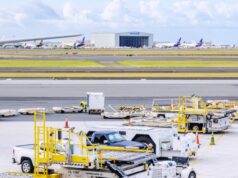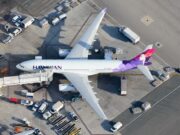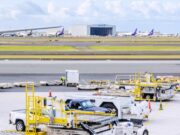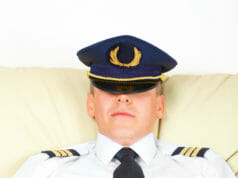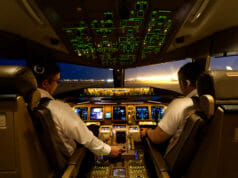
Photo of United Airlines Flight 173, after it crashed into a wooded area while troubleshooting a landing gear anomaly. Photo used with permission from the FAA Lessons Learned website, lessonslearned.faa.gov
Captain: “You gotta keep ‘em running.”
Engineer: “Yes sir.”
This fateful exchange shows insight into a world that once was, but thankfully no longer exists. It doesn’t seem like a prophetic exchange, but it shows what once was accepted as absolute authority and control by the captain of an airplane.
In aviation history, we have many watershed events that are considered significant because they forever changed the course of aviation history. We briefly touched on one of these watershed accidents when we discussed the crash that killed Knute Rockne in 1931, followed by the fatal accident that killed Senator Bronson Cutting in 1935. Both lead to sweeping changes in the way aviation was regulated, investigated and overseen by the government. United Flight 173 served as the final impetus to the development of Crew Resource Management.
It was with the crash of United 173 that there was finally enough support for the development of a technology to address the human error aspect of aviation safety in a way that attempted to change crew dynamics and the role of airline crews forever.
On the evening of December 28, 1978 United flight 173 crashed into a wooded area near Portland International Airport. What should have been a routine flight from Denver, CO to Portland, OR went tragically wrong when a relatively minor mechanical problem lead to a loss of situational awareness that caused a much larger, and insurmountable problem.
While on approach to the airport, the crew deployed the landing gear that prompted an abnormal gear indication, as well as an unusual thump and yaw when the gear extended. Due to the lack of an indication that the main was locked and down, the crew believed that the loud thump indicated a problem with gear deployment and thought it would be best to troubleshoot the problem, determine the severity and deal with it accordingly. It was a good decision based on the potential consequences of a major gear problem.
At approximately 1712 hours local time, the crew opted to discontinue the approach to the airport and enter a holding pattern at 5,000 feet as directed by Air Traffic Control. It should be noted that in addition to the gear deployment, the First Officer (pilot flying) had also requested the extension of 15 degrees of flaps. Any astute observer would recognize that the additional drag created by the gear and flaps would have a significant effect on fuel burn, as would the relatively low holding altitude.

United Airlines Flight 173. Photo used with permission from the FAA Lessons Learned website, lessonslearned.faa.gov
Between 1712 and 1738 hours, the crew ran appropriate checklists, inspected the status of the gear, discussed the ramifications of a gear problem upon landing and contacted the company maintenance department, all normal actions in a situation like this. The captain was recorded around 1738 hours saying that he believed they would be landing in about 15-20 minutes more and that they had about 7,000lbs of fuel onboard. About 8 minutes later, he would estimate his fuel at 5,000lbs.
At 1746 hours. the first indication of concern was voiced when the first officer asked the captain how much fuel remained. This starts to show some indication of the problem because there was no attempt by either the first officer or the flight engineer to run their own fuel calculations for redundancy up to this point. In a CRM environment, all three crew members would have been expected to run independent calculations and come to a consensus, where the most conservative answer prevails.
Approximately 3 minutes later, the flight engineer voiced some concern about the status of some of the fuel pump lights that began flickering and upon mentioning this to the captain, he was told that was “normal” based on dropping below a set amount of fuel. The captain indicated no real concern about the fuel level and the flight engineer did not query further, although under CRM that would have been expected.
At 1750 hours., a full 38 minutes after entering the hold, the captain requested landing performance data for an airplane that had “3000 or 4000 pounds” of fuel. At this point, the first officer began to advocate that they might not have enough fuel when he questioned, “Fifteen minutes?” The flight engineer then responded, “Not enough. Fifteen minutes is going to really run us low on fuel here.” At this point it becomes clear that both the FO and the FE are running independent calculations that do not agree with the captain’s, but they do not advocate that they do not agree. They simply ran the numbers and attempted to make the calculations work. Less than 1 minute later, the captain instructed the engineer to notify the company representative that they would land with about 4,000lbs and the engineer complied.
Five minutes later, the first officer asks the engineer: “How much fuel you got now?” and the engineer responded that they had 3,000lbs with 1,000lbs in each tank.
The fuel came up again several minutes later at 1803 hours, when the engineer advised, “We got about three on the fuel and that’s it,” at which point the captain briefed approach control that they had 3,000-4,000lbs of fuel (the same value they have had for the last nearly 15 minutes). This shows very clearly that the captain was absolutely distracted from a problem that was rapidly becoming more important than the landing gear problem. His focus had remained on the gear problem and preparing the cabin for arrival. It should also be noted that with a transmission he told Portland Approach that they would be landing in about 5 minutes, despite the fact they were now almost 10 minutes beyond their originally stated maximum estimate. At 1806 hours the captain again notified the flight attendant that they would be landing in about 5 minutes (now 13 minutes beyond the originally estimated latest time). Simultaneously, the first officer exclaimed, “I think you just lost number four…”
At this point, there was a large degree of confusion and discussion on the flight deck about why engines were starting to flame out and what they were going to do while in a futile attempt to make the airport. It was during this exchange that the captain ordered the engineer, “Keep ‘em running” and the engineer simply responded, “Yes sir,” though there was absolutely no physical way to keep the engines running with no fuel.
At this point, it was too little too late. Any opportunities to avoid the problem, correct the outcome and break the chain of events leading to an accident had already passed. When the DC-8 came to a rest in the forest, there were ten fatalities and 24 injuries, including the flight engineer, a flight attendant and eight passengers.
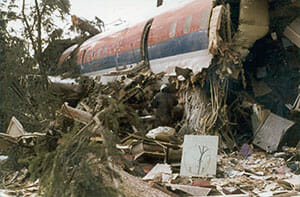
Photo of United Airlines Flight 173, after it crashed into a wooded area while troubleshooting a landing gear anomaly. Photo used with permission from the FAA Lessons Learned website, lessonslearned.faa.gov
By this point in aviation, it was well known that many accidents were the result of what was vaguely termed “human error.” Within weeks of this watershed accident, NASA convened a conference of government and industry experts to determine a way to solve these systemic human errors in aviation accidents. It was through this process that psychologist and NTSB investigating board member, Alan Diehl, recognized common traits between this accident and several others and determined that research being conducted by NASA at the time might provide a foundation for improved situational awareness and communication among qualified crew members.
Using modern CRM, the airplane would have entered a holding pattern, and all 3 crew members would have begun calculating fuel onboard, time to get to the airport and shoot the approach, and a reserve amount to protect from error and miscalculation. They would have then determined how much time they would be able to stay in the hold and what the latest time to leave the hold would have been. They would have then all compared answers, verified each other’s math and resolve any disagreements. At that point, they would have started to troubleshoot the problem and brief the cabin crew of the time limit, while one pilot would have been responsible for flying/monitoring fuel (first officer, since he was the other qualified pilot at the controls), one would have been responsible for coordinating everything (usually the captain) and one would have accomplished the other items (engineer).
In 1981, United Airlines implemented the first “Cockpit Resource Management” program in the world, as an effort to foster open communication, advocacy and leadership/followership among the crew of the flight deck. Of course, it didn’t take long to realize that all members of a crew, including ground handlers, cabin crew, maintenance personnel, dispatchers, etc., were all qualified and professional “crew” members who may have valuable insight into a specific situation. It is because of this evolution that modern CRM concepts have been the singularly most valuable safety technology adopted, to date. This fact can be seen in modern air disasters such as United 232 in Sioux City, IA and US Airways 1549 on the Hudson River, where CRM undoubtedly resulted in an outcome different than may otherwise have been.




































































